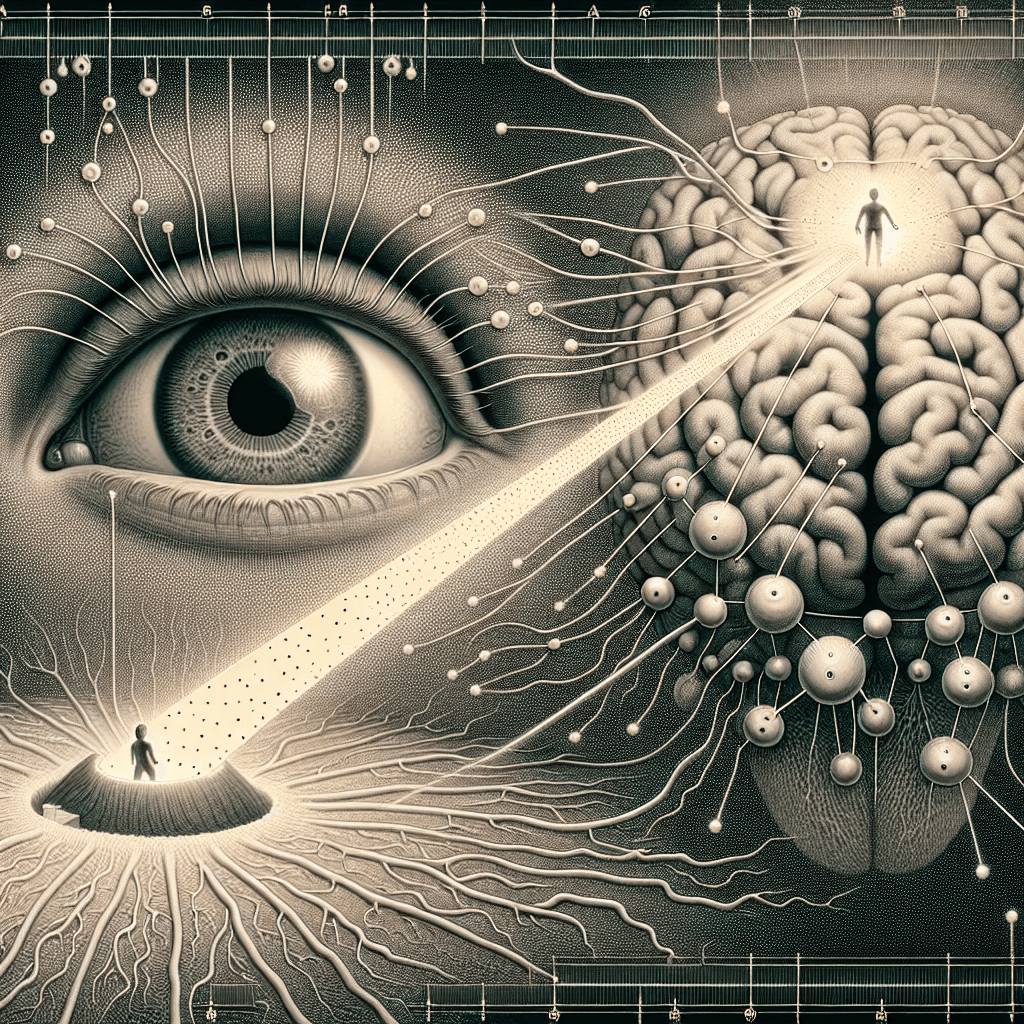Why does your brain invent information to fill in your eye's natural blind spot
There's a hole in your vision right now, but your brain is so good at hiding it that it literally invents reality to fill the gap.


Too Long; Didn't Read
TLDR: Your eye has a physical blind spot where the optic nerve connects, creating a gap in your vision. To avoid a distracting hole, your brain automatically fills in the missing section by making an educated guess based on the surrounding colors and patterns, giving you a complete and stable view of the world.
The Invisible Hole in Your Vision: Why Does Your Brain Invent Information to Fill in Your Eye's Natural Blind Spot?
Did you know there's a hole in your vision right now? In each of your eyes, there's a small area where you are completely blind. You don't see a black spot or a gap in the world because your brain is performing a remarkable magic trick, one it does every second of your waking life. It actively invents visual information to patch over this hole, ensuring you perceive a complete, seamless world. This fascinating phenomenon isn't a flaw; it's a testament to the incredible predictive and constructive power of the human brain. This post will delve into the science behind your natural blind spot and explore the clever neurological process your brain uses to make it disappear.
The Hole in Our Vision: Understanding the Optic Disc
To understand why your brain fills in the gap, we first need to understand why the gap exists. The culprit is a crucial piece of anatomy called the optic disc.
Your retina, the light-sensitive layer at the back of your eye, is covered in millions of photoreceptor cells (rods and cones) that detect light and color. These cells send their signals to the brain via the optic nerve, which is essentially a thick cable of nerve fibers. The point where this cable plugs into the back of the retina is the optic disc. The problem is, this "port" takes up space, and at that specific spot, there are no photoreceptors.
Since there are no cells to detect light in this area, it creates a physiological blind spot in each eye's visual field. It’s not a defect; it's simply a consequence of how our eyes are wired.
Your Brain the Illusionist: The Science of "Filling-In"
If we have a blind spot, why don't we see a persistent black hole in our vision? The answer lies in a process called perceptual filling-in. Your brain doesn't just ignore the lack of information from the optic disc; it actively and intelligently guesses what should be there.
Here’s how it works:
- It Uses Contextual Clues: The brain analyzes the visual information surrounding the blind spot. If the spot falls on a background of striped wallpaper, your brain will "paint" stripes into the gap. If it's on a blue wall, it fills the hole with blue. It’s an incredibly sophisticated interpolation based on the immediate environment.
- It's a Predictive Machine: Your brain constantly makes predictions to help you navigate the world efficiently. Filling in the blind spot is a prime example of this. It assumes the world is continuous and that the pattern or color surrounding the gap continues through it. This is a much better survival strategy than being constantly distracted by a visual anomaly.
- Binocular Vision Helps: For the most part, we don't notice the blind spot because we have two eyes. The blind spot in your left eye is located in a different part of your visual field than the blind spot in your right eye. This means one eye's field of vision covers the other's gap, providing the brain with complete information. The filling-in phenomenon becomes most apparent when you close one eye.
Research using brain imaging techniques like fMRI has shown that even though no information is coming from the blind spot, the brain's visual cortex—the area responsible for processing sight—remains active. It’s literally constructing a reality to present a coherent picture to your consciousness.
An Evolutionary Advantage: Why Bother Filling the Gap?
This neurological sleight of hand is not just a neat party trick; it provides a significant evolutionary advantage. A stable, uninterrupted view of the world is crucial for survival. Imagine trying to track a predator or navigate a complex environment with two distracting, moving holes in your vision.
By creating a seamless visual field, the brain prioritizes a functional and useful perception of reality over a fragmented but technically more "accurate" one. It demonstrates a fundamental principle of neuroscience: your perception is not a passive recording of the outside world. Instead, it is an active, dynamic construction created by your brain to help you make sense of and interact with your surroundings effectively.
Conclusion
The natural blind spot is a perfect window into the workings of our own minds. It reveals that the world we see is not a direct photograph but a masterpiece painted by our brain. The optic disc creates a physical gap in our vision, but our brain, acting as a master artist, seamlessly fills in the canvas using context, prediction, and information from our other eye. This process of "filling-in" ensures our perception remains stable and whole, allowing us to navigate our environment with confidence. So, the next time you look around, take a moment to appreciate the silent, invisible work your brain is doing to create the rich, continuous visual world you experience every day.


